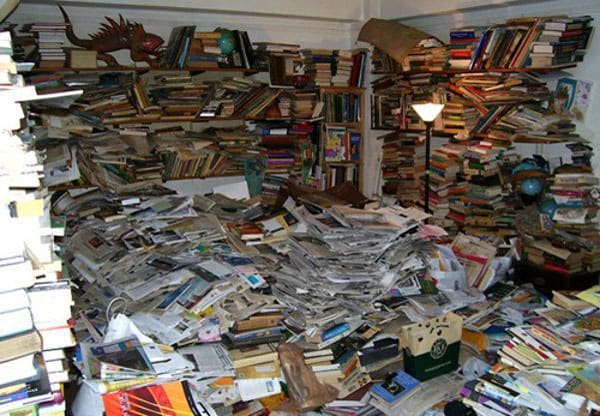
We all have clutter pile up from time to time. But if you’re part of the 3 to 5 percent of the American population with compulsive hoarding tendencies, all that stuff may be preventing you from leading a safe, healthy life. Photo courtesy of myfixituplife.comDon’t ignore these dangerous hoarding signs:
Photo courtesy of myfixituplife.comDon’t ignore these dangerous hoarding signs:
-
- Fire safety issues.Heating appliances and vents blocked by flammable materials, the hoarding of dangerous or flammable items, and blocked entrances and exits present serious fire safety challenges. A 2009 Australian study found that fires in hoarding households:
- Accounted for 24 percent of preventable fatalities.
- Reduce the ability to contain a fire to a single room from 90 to 40 percent.
- Require nearly twice the manpower than typical residential blazes, costing nearly 16 times as much to fight.
- Had an average estimated damage of $100,000, versus $12,500 for a typical residence.
- Were far less likely to contain working smoke detectors: 26 percent versus the 66 percent typical household average.
- The impairment of basic living activities.Compulsive hoarders are unable to organize their possessions and stack them precariously or toss them aside, which makes them likely to suffer the impairment of basic living activities. Cooking, sleeping, cleaning, and more can become impossible due to the little usable space and minimal pathways available for traversing room to room. It is not uncommon for hoarders to have to crawl, rather than walk, through pathways in the home. In one instance, an inner city L.A. resident was forced to sleep in a recliner on his porch resulting from the over 5,000 bikes and bike parts in his home.
- Health issues.Not only can falls and accidents result from the clutter of hoarding, but respiratory and cardiac health issues may occur due to illnesses caused by the buildup of garbage, feces, and mold. To make matters worse, emergency personal are often blocked by a hoarder’s possessions, preventing them from getting to injured inhabitants in their time of need. The need for roof or exterior wall removal for access delays extraction.
- Building safety.Hoarded items are capable of creating structural damage from excess weight, as well as weakening building due to mold, moisture, leaks, infestation, and more resulting from hoarding.
- Risks to children and dependents.Social workers may be required to remove neglected children and elderly dependents from homes known to possess serious health and safety risks including hoarding; fire safety and sanitation issues, such as long-standing unwashed dishes, dirty clothes, and unhygienic bathroom conditions; and social isolation resulting from a lack of space for visitors.
- Animal safety.Neglect and improper care resulting from the hoarding of animals can create air quality issues, unsanitary living conditions, and the spreading of disease. In addition, if these conditions are not addressed they could contribute to misdemeanor or felony-level crimes resulting in forfeiture of animals, fines, and imprisonment. One example is the case of the 2010 discovery of more than 150 cats rescued from a residence in Powell, Wyoming by the Humane Society. Found in deplorable condition, the home was saturated in urine and feces, the animals in poor health and suffering from an array of infections and infestations resulting from the hoarding by residents who believed they were trying to help.
- Homelessness.The safety risks associated with hoarding can violate lease agreements and the Department of Public Health can condemn dwellings, resulting in homelessness. Shelters are also known to bar individuals whose hoarding issues put the health of other shelter inhabitants at risk.
- Fire safety issues.Heating appliances and vents blocked by flammable materials, the hoarding of dangerous or flammable items, and blocked entrances and exits present serious fire safety challenges. A 2009 Australian study found that fires in hoarding households:
Don't let hoarding control your life. Contact the professionals at Rainbow Restoration®.Rainbow Restoration, your professional hoarding cleanup and removal experts.